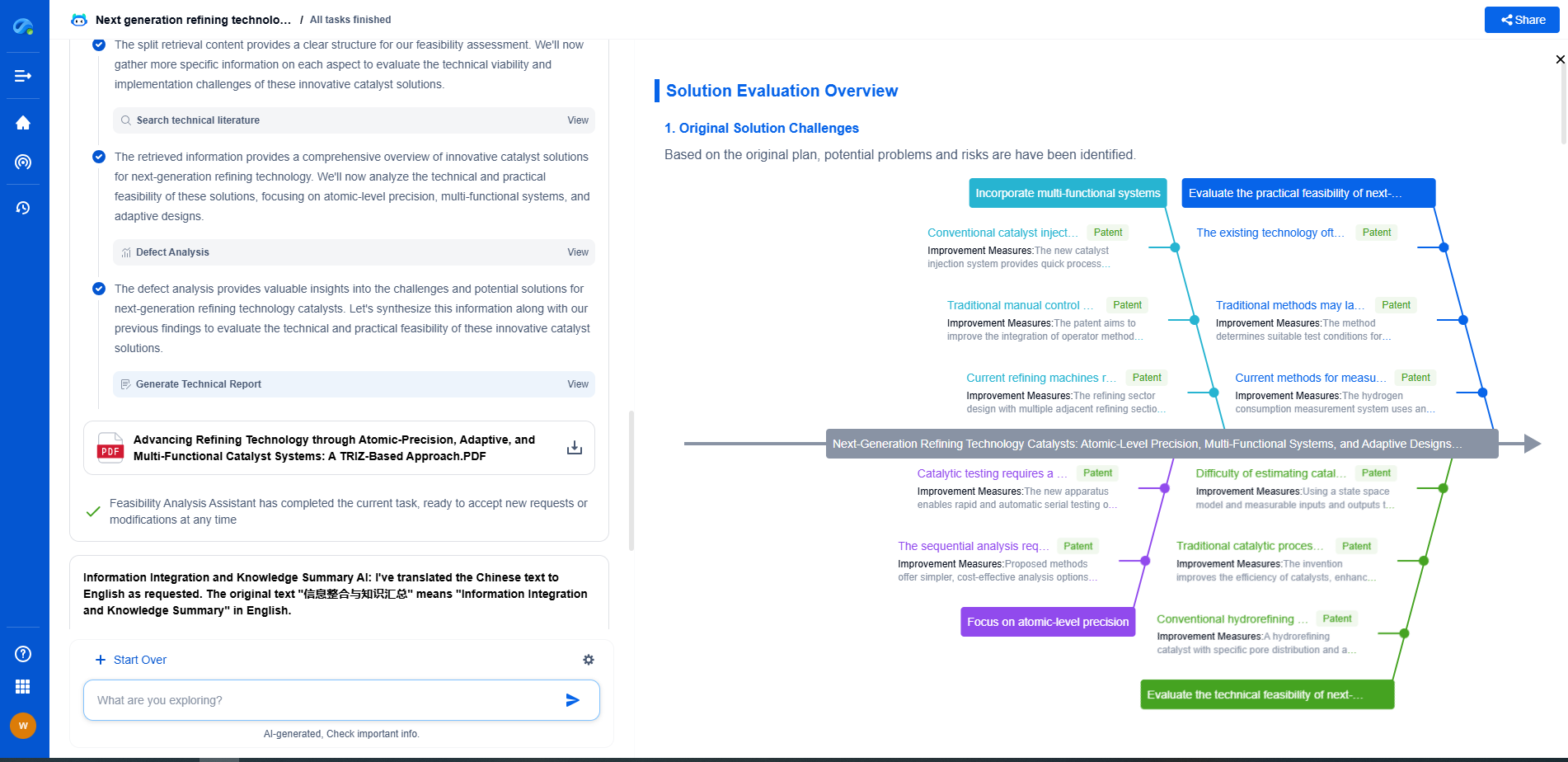How to Ensure Battery Safety in Wearable Devices
JUN 20, 2025 |
Battery safety in wearable devices is a critical consideration for both manufacturers and consumers. As wearables become more integrated into our daily lives, ensuring the safety and longevity of their power sources is essential. This article explores key strategies and considerations to uphold battery safety in wearable technology.
Understanding Wearable Battery Needs
Wearable devices are unique in that they demand compact, lightweight, and efficient power sources. Most wearables rely on lithium-ion or lithium-polymer batteries, known for their high energy density and ability to recharge. However, these batteries come with safety challenges that must be addressed through careful design and management.
Design Considerations for Battery Safety
1. **Battery Selection and Sizing**
Selecting the right battery type and size is crucial. Manufacturers must choose batteries that match the device's power demands while considering the physical constraints of a wearable. Overloading a battery or using one that is too small can lead to overheating and potential hazards.
2. **Thermal Management**
Wearable devices must be designed to dissipate heat effectively. Poor thermal management can result in excessive heat buildup, increasing the risk of battery swelling or explosion. Employing heat sinks, thermal interface materials, and strategic component placement can mitigate these risks.
3. **Robust Enclosure Design**
The enclosure not only protects the battery from physical damage but also shields it from environmental factors like moisture and dust. Using durable, non-conductive materials helps prevent short circuits and other battery-related failures.
Battery Management Systems
1. **Battery Monitoring**
Integrating a sophisticated battery management system (BMS) is essential for monitoring the battery's health and performance. A good BMS tracks charge levels, voltage, temperature, and current, ensuring that the battery operates within safe parameters. This system can also provide alerts to users regarding battery health.
2. **Overcharge and Over-discharge Protection**
Preventing overcharging and over-discharging is critical for battery longevity and safety. Implementing protective circuitry that cuts off charging when the battery reaches full capacity or discontinues discharge before a critical level is reached can prevent damage and potential hazards.
User Education and Best Practices
1. **Safe Charging Practices**
Educating users about safe charging practices is vital. Encourage them to use only the chargers provided by the manufacturer, avoid charging in extreme temperatures, and refrain from leaving devices connected to power sources for extended periods.
2. **Recognizing Warning Signs**
Users should be aware of warning signs indicating potential battery issues, such as swelling, unusual heat, or a sudden drop in performance. Prompt action, like discontinuing use and seeking professional assistance, can avert accidents.
Regulatory Compliance and Testing
Manufacturers must ensure their devices comply with relevant safety standards and regulations, such as those set by the Consumer Product Safety Commission (CPSC) and International Electrotechnical Commission (IEC). Extensive testing under various conditions helps identify potential risks and refine safety features before a product reaches the market.
Conclusion
Enhancing battery safety in wearable devices involves a multifaceted approach encompassing design, technology, user education, and regulatory compliance. By prioritizing these aspects, manufacturers can create wearables that are not only innovative and functional but also safe for everyday use. As technology advances, ongoing commitment to safety will be crucial in fostering consumer trust and promoting the widespread adoption of wearable technology.
Accelerate Breakthroughs in Fuel Cell and Battery Innovation—with the Power of AI
From solid-state battery breakthroughs to high-efficiency hydrogen fuel cells, keeping pace with fast-evolving chemistries, global patent landscapes, and emerging application pathways is an ever-growing challenge for R&D and IP professionals.
Patsnap Eureka, our intelligent AI assistant built for R&D professionals in high-tech sectors, empowers you with real-time expert-level analysis, technology roadmap exploration, and strategic mapping of core patents—all within a seamless, user-friendly interface.
Whether you're optimizing cathode formulations, evaluating electrolyte stability, or navigating the crowded patent space around battery pack design, Eureka empowers you to move faster and with greater confidence.
Start your journey with Patsnap Eureka today—streamline your research, enhance decision-making, and power the future of energy with AI-driven clarity.
- R&D
- Intellectual Property
- Life Sciences
- Materials
- Tech Scout
- Unparalleled Data Quality
- Higher Quality Content
- 60% Fewer Hallucinations
Browse by: Latest US Patents, China's latest patents, Technical Efficacy Thesaurus, Application Domain, Technology Topic, Popular Technical Reports.
© 2025 PatSnap. All rights reserved.Legal|Privacy policy|Modern Slavery Act Transparency Statement|Sitemap|About US| Contact US: help@patsnap.com

